Finding the best lenses for Sony and Canon mirrorless cameras can be overwhelming, given the countless options on the market. As a photographer with years of experience shooting with both systems, I understand how critical it is to choose the right lens to elevate your work, whether you're a seasoned professional or an enthusiastic beginner.
In this guide, I'll walk you through the top options that deliver exceptional performance for various needs—from portraits and landscapes to macro and videography.
Sony and Canon are industry leaders in mirrorless cameras, known for their advanced technology and stellar image quality. Their ecosystems boast a wide range of lenses, including prime lenses for razor-sharp images, versatile zoom lenses, and specialized optics like macro lenses. I'll also address key factors to consider, such as aperture, focal length, and compatibility with full-frame or APS-C sensors.
Whether you're shooting on a Sony Alpha series camera or a Canon EOS R system, investing in the right lens can unlock your creative potential. I'll also highlight some excellent third-party options, like Sigma Art lenses and Tamron lenses, which often deliver professional results at a fraction of the cost.
By the end of this article, you’ll have all the information you need to make a confident, informed decision.
6 Best Lenses for Sony and Canon Mirrorless Cameras
- Sony E PZ 10-20mm F4 G
- Sony FE 50mm F2.5 G
- Sony E PZ Lens 18-200mm F3.5-6.3 OSS
- Canon RF 85mm F2 Macro IS STM
- Canon RF 16mm F2.8 STM Lens
- Canon EF 16–35mm F2.8 L III USM Lens
What makes Mirrorless Camera Lenses Different?
When it comes to photography, lenses are as essential as the camera itself. They are responsible for shaping the light that enters to capture images. There are lenses for all types of cameras, each with unique characteristics that differentiate them from the others.
In this case we will focus on lenses for mirrorless cameras from Sony and Canon brands , the future of digital photography. If you still don’t know what mirrorless cameras are , here we explain in detail everything you need to know about them. And, if you are already an expert in the field, check out what are, according to our experts, the best EVIL or mirrorless cameras quality price currently.
And with the revolution of mirrorless cameras, a new era of lenses has been inaugurated, designed to take full advantage of these highly advanced cameras. In this article, we help you get to know the best mirrorless lenses a little better, so you know how to understand them and which one to choose, through the two titans of the industry, Sony and Canon .
Before we start analyzing the features of the best mirrorless lenses, it is essential to understand what they are used for and why we cannot use the same lenses for any camera.
Mirrorless lenses are specifically designed for mirrorless cameras, which differ from the ones found in the lack of the mirror and optical viewfinder characteristic of SLR cameras. These cameras use digital technology to display the image on an LCD screen or electronic viewfinder, which requires lenses adapted to this new configuration.
Within them we can classify the lenses for APS-C or Full Frame mirrorless cameras , according to the size of their sensor. We know that this can be a bit complicated, but in the linked article we explain the comparison between Full Frame vs APS-C sensors so that you better understand the difference between the two.
How to differentiate Sony or Canon Mirrorless Lenses

Before showing you the best lenses for Sony or Canon mirrorless cameras, you should know the meaning behind their acronyms.
Canon Nomenclature
In case you have forgotten some Canon nomenclatures, here we bring you the meaning of some more:
- Generation : These are Roman numerals that indicate the development phase of the objective. When the design is improved, the number is changed (III is more recent than II).
- L : L stands for luxury, we can find it in professional lenses with magnificent optical quality. They have a red ring around the end.
- DO: Stands for “Diffractive Optics”. These lenses use special elements to make them more compact without losing quality. They have a green ring around the end.
- DS : They have a blur-reducing coating.
- IS : It has image stabilization that reduces camera shake and provides sharper images.
- USM : Ultrasonic autofocus motor. They are much faster and have manual focus control.
- STM : Stepper motor technology. It features a quieter and smoother focusing, ideal for making videos and photos.
- Nano USM : It has the advantages of STM and USM motors in one.
- Macro : These are lenses designed to take close-ups and capture details very close to the subject.
Sony Nomenclature
Do you feel overwhelmed when you see a series of numbers and letters in the name of a lens because you don’t know what they mean? This question is very common among beginner photographers and it is very important to know this information in order to choose the best Sony and Canon mirrorless lenses. Below we explain everything in detail.
This sum of letters and numbers in the target name indicates:
- Focal length in millimetres : if there is only one number, it is a fixed lens, while if it is an interval, it is a zoom lens. Example: 50mm or 18–55mm.
- Shutter Aperture (F) : This number corresponds to the shutter opening value when the lens is at its widest aperture (when the number is lowest). The lower the value, the faster the lens.
These two classifications are basic and common to all lens brands. In this case, Sony differentiates itself by using its own nomenclature :
- SEL : is the name for lenses with E-mount type (E-Mount).
Best Lenses for Sony and Canon Mirrorless Cameras
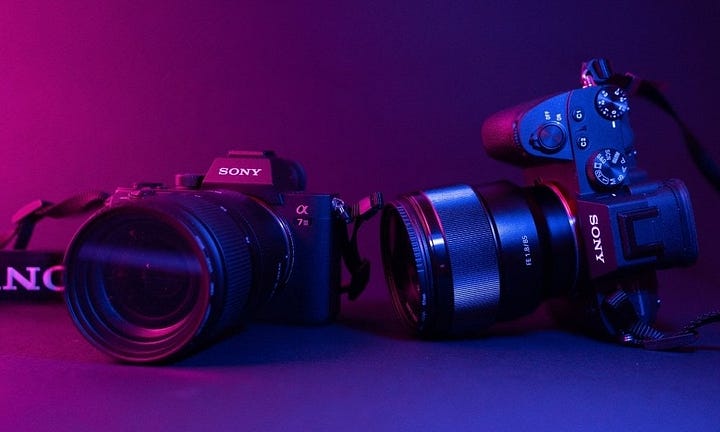
Here we go with the compilation you were eager to see: the best lenses for mirrorless models from Sony and Canon.
3 Best Lenses for Sony Mirrorless Cameras
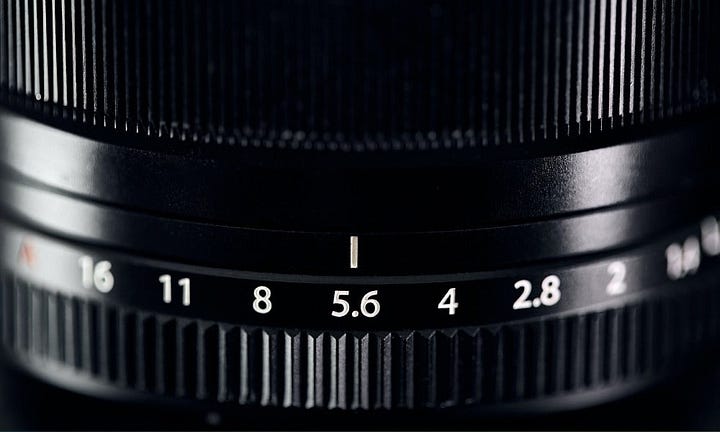
The nomenclatures explained, let’s look at the corresponding codes:
- E : This code indicates that it is a lens for a camera with an APS-C sensor. It can be confusing as it is the same letter as the mount type, so be very careful if you have a full frame mirrorless camera, because it will crop the image.
- PZ : indicates motorized zoom. These lenses are usually higher-end, as they have more advanced technology than basic ones.
1. Sony E PZ 10-20mm F4 G
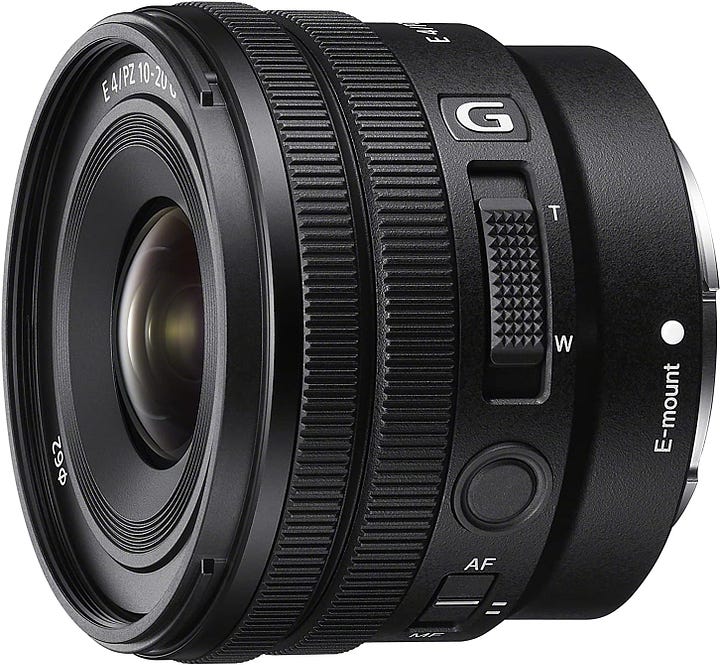
This zoom is the best choice for an APS-C wide-angle lens with its 10–20mm range , super versatile for landscapes and architecture. Its compact design, precise focusing and image stabilization make it ideal for travel and video. It offers optical G quality and control ring.
FE : in this case it does refer to the fact that it is a lens compatible with a camera with a Full Frame image sensor.
2. Sony FE 50mm F2.5 G
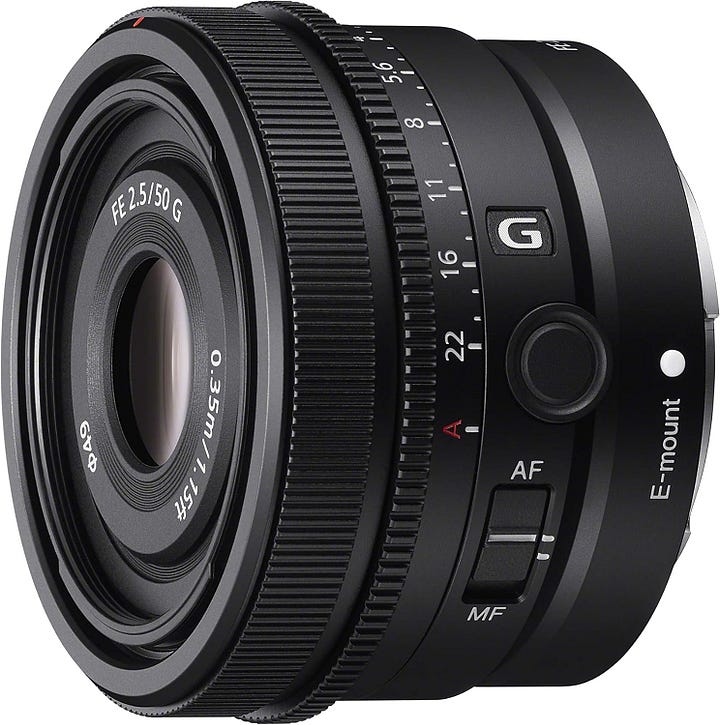
Without a doubt, the must-have for every photographer. There is no better example of a Sony Full Frame lens than the 50mm G series , a compact gem designed for Sony Full Frame mirrorless cameras. It is the most versatile and perfect for portraits with its G quality, fast and precise focusing, as well as being light and portable.
A lens intended for full frame can be compatible with any camera within this mount.
Whereas a lens created for an APS-C sensor could fit a full frame camera, but would cause vignetting (darkening around the image). Although there are adapters for these, loss of autofocus may also occur.
In addition, Sony Full Frame lenses generally tend to be more expensive and heavier, because their optics must cover a larger surface area.
- Sonnar T (etc.): We will only see this code if it is a Carl Zeiss lens.
- G or GM : This code indicates that it belongs to one of these two series (G or G-Master Premium) of high quality Sony lenses. We have already seen how the G series works, but GM is even better and perfect for professionals.
A fantastic choice is this G-Master lens , a masterpiece for FE E-mount mirrorless cameras and one of Sony’s best lenses. Its fixed focal length of 85mm makes it a premium choice for portraits, offering a magnificent bokeh effect thanks to its wide aperture. Its optical quality and sharpness are exceptional. Fast and accurate focusing, along with its sturdy construction, make it ideal for capturing details with high quality in a variety of conditions.
- ZA : for Carl Zeiss lenses.
- OSS — Indicates that the lens has a built-in image stabilization function. This feature is especially great for zoom lenses, since this type of photography often requires capturing an image that can take hours and hours (in some cases without a tripod), as occurs in nature.
3. Sony E PZ Lens 18-200mm F3.5-6.3 OSS
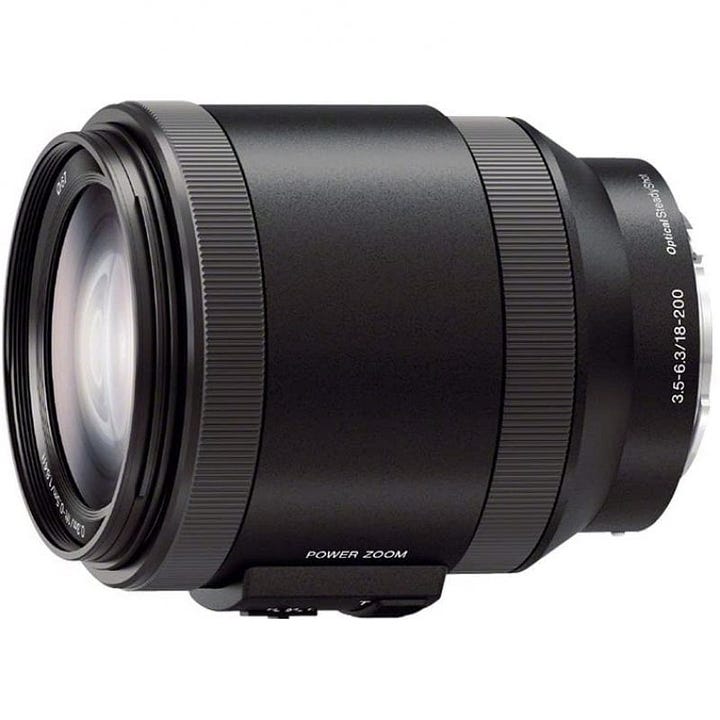
This Sony 18–200mm APS-C zoom lens is a highly versatile zoom featuring a wide focal range, suitable for capturing a variety of scenes from landscapes to telephoto.
Its optical image stabilization (OSS) helps reduce unwanted shake. Although its variable f/3.5–6.3 aperture can be limited in low-light conditions, its compact and lightweight design makes it convenient for travel and on-the-go photography.
- LE : These are Light Edition lenses, with less weight and size.
The A-mount corresponds to cameras that do have a mirror, that is, SLR or DSLR cameras. We covered them in our post on the best DSLR cameras for the money.
Photo & Video Gear Reviews
Best Webcams for Streaming and Working | Best Polaroid Instant Camera | Best Baby Monitor | Best Underwater Camera | Best Weird Gift Ideas | Best Air Pistol on Amazon | Best All In One Computer
3 Best Lenses for Canon Mirrorless Cameras
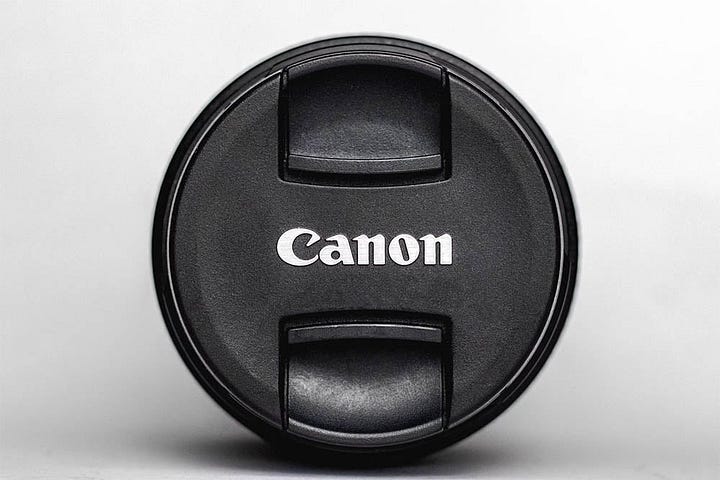
At Canon we find five different types of lens mount: RF, RF-S, EF, EF-S and EF-M.
RF and RF-S
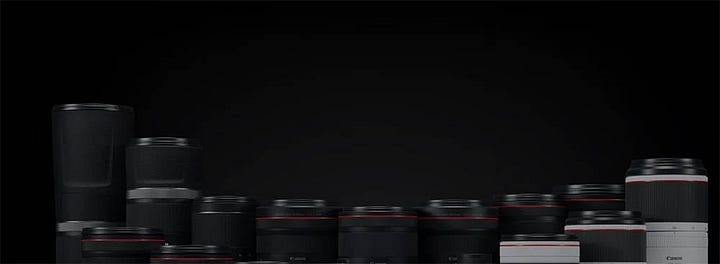
RF and RF-S lenses are designed for Canon’s EOS R system mirrorless cameras. Within this range, both Full Frame and APS-C share an advanced RF mount.
In addition to lenses with exceptional focusing technologies and optical quality, the RF mount enables faster data transfer between the lens and the camera. This translates into advanced autofocus tracking, improved image stabilization, real-time optimization and other significant advances.
However, even if you can use RF lenses for APS-C cameras, there will always be a certain crop factor. For this reason, the appearance of the EOS R7 and EOS R10 was key to the emergence of new RF-S lenses specially designed for RF mount cameras with APS-C sensors .
4. Canon RF 85mm F2 Macro IS STM — Compact Medium Telephoto Black Lens
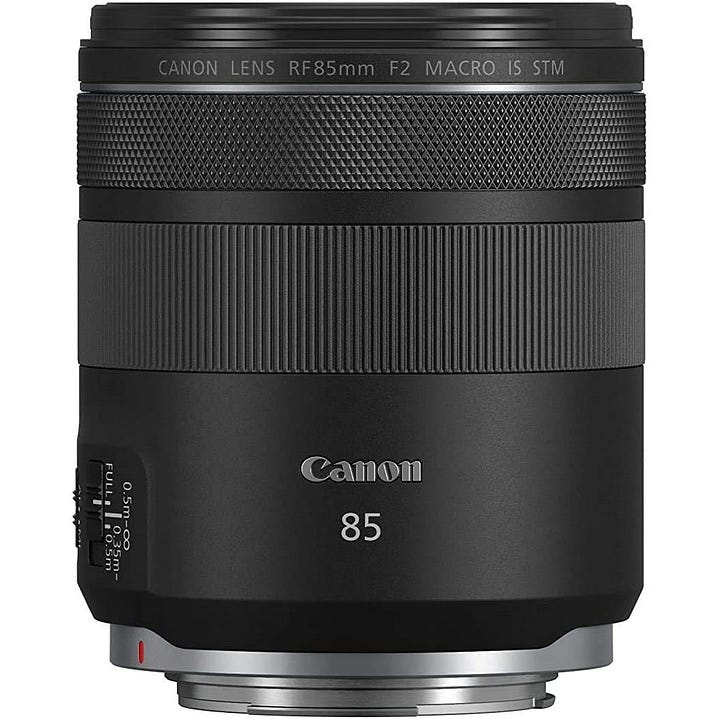
If you’re thinking about buying a portrait lens, one of the best you can find on the market is undoubtedly the 85mm Macro.
A versatile lens, capable of capturing the essence of your subjects with a wide aperture, creating very striking blurred backgrounds. Its hybrid optical stabilization system (IS) provides greater sharpness in low light and its STM motor for fast and silent focusing is ideal for photography and video.
5. Canon RF 16mm F2.8 STM Lens
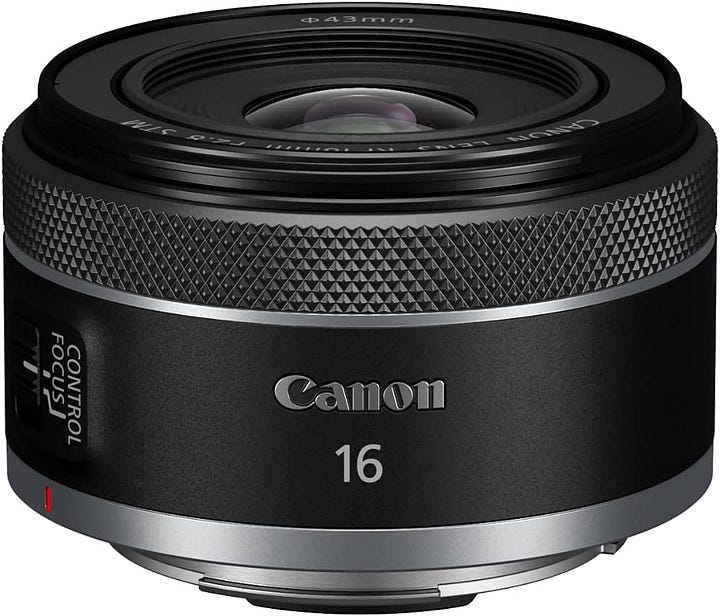
On the other hand, if you want a wide angle, you should go for the 16mm lens , a creative marvel that captures unique and wide perspectives and provides versatility in various lighting conditions.
It is also equipped with an STM motor, fast and silent focusing for photography and video. Its compact design makes it the ideal companion for traveling, vlogging or astrophotography.
The EOS R range cameras can be used with the EF and EF-S lenses discussed below using an adapter.
EF

EF stands for “Electronic Focus” and is the oldest lens mount from Canon ; however, it is also the most compatible with different Canon cameras. This type of lens mount corresponds to the brand’s SLR or DSLR cameras, both Full Frame and APS-C (with crop factor).
6. Canon EF 16–35mm F2.8 L III USM Lens
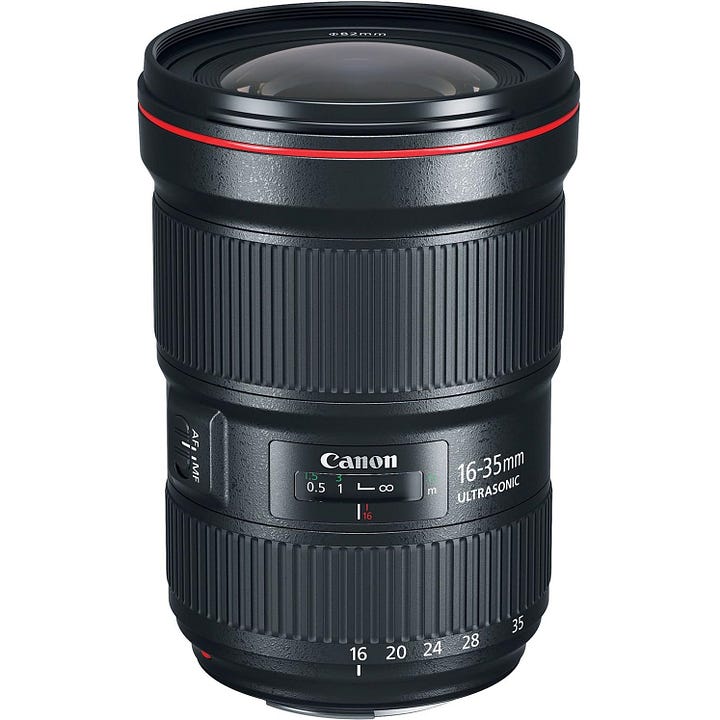
If you are a very demanding photography professional and are looking for one of the best and most versatile Canon lenses for everyday use, the best option is the 16–35 mm.
It captures everything from wide vistas to detailed scenes. Very bright and equipped with ultra-fast USM autofocus. Its rugged construction makes it suitable for any challenge.
It is worth mentioning that EF lenses can also be used with EOS M and EOS R cameras using an adapter.
EF-S
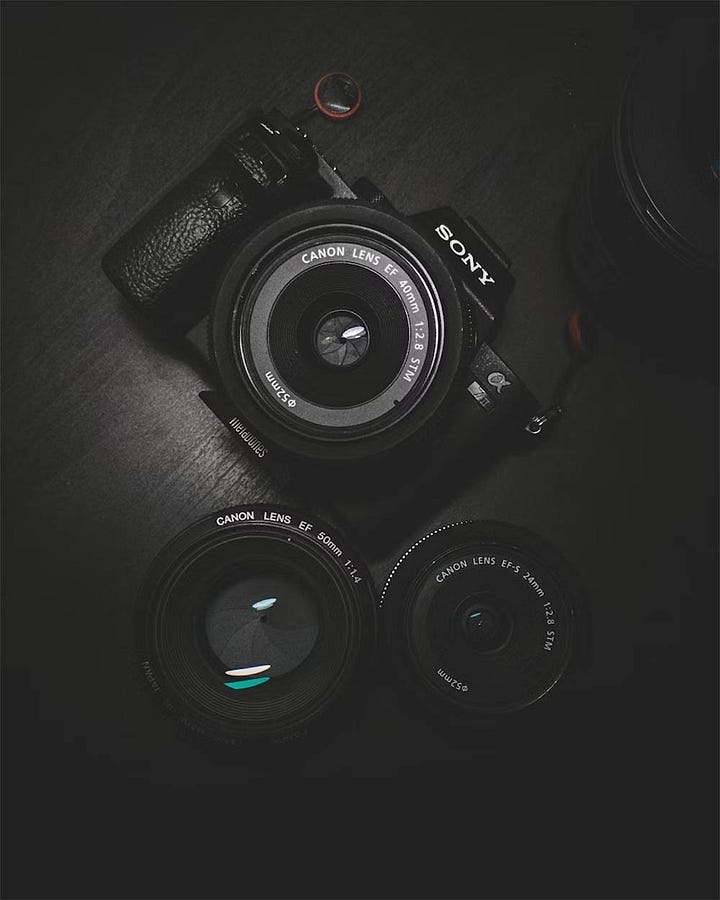
EF-S or short back focus lenses are designed for Canon APS-C DSLR cameras and are not compatible with Full Frame DSLR cameras. These lenses are smaller in size and weight due to their design for a smaller sensor.
Due to technological advances in photography, these types of lenses and APS-C SLR cameras are no longer being manufactured by Canon and Sony, so their offer is increasingly reduced.
EF-M

This type of lens mount is the system designed specifically for mirrorless cameras in the Canon EOS M range.
The 11–22mm wide-angle lens is a promising choice for photographers looking to capture stunning landscapes or unique perspectives, from ultra-wide views to detailed shots. Its compact and lightweight design makes it ideal for carrying around. It features an STM motor, with smooth and silent focusing and optical stabilization (IS) to counteract unwanted movement.
Just like in reverse, EOS M cameras can also be used with EF and EF-S lenses using an adapter .
This is all you need to know to choose the best Canon and Sony mirrorless lenses to suit your photography needs. If you are looking for the top cameras for your content, here are the best DSLR cameras for the money.
Partner post by Glenn ABC: Best Lenses for Sony and Canon Mirrorless Cameras: Complete Guide.











